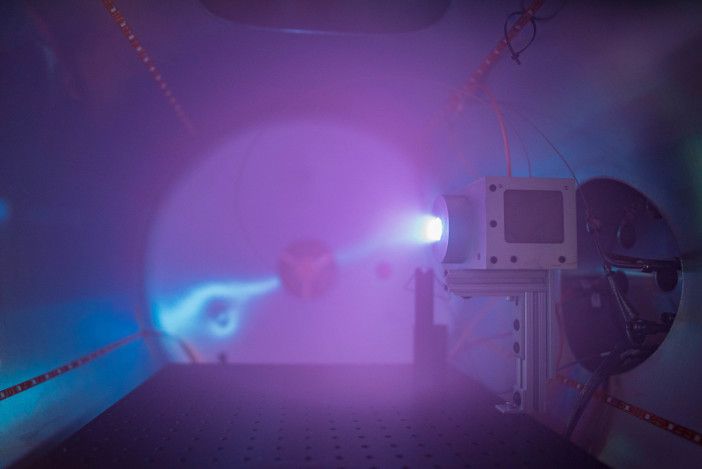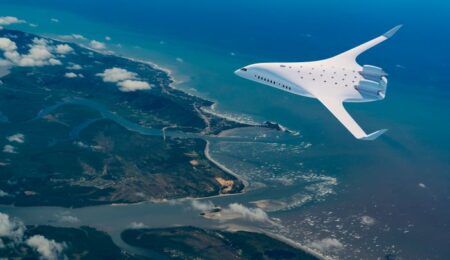The electric thruster being tested (Image: Phase Four)
Aerospace engineering company Phase Four has achieved the best performance to date during tests of its electric radio frequency thruster, which is being developed for in-space propulsion.
The tests of the electric radio frequency (RF) thruster demonstrated performance on a par with the latest Hall Effect Thrusters (HETs) and a 3000% efficiency increase over all existing RF plasma thrusters. The third-party testing was conducted by independent research firm The Aerospace Corporation.
Phase Four’s chief scientist, M Umair Siddiqui, said, “These results validate our vision – to increase access to space by producing a thruster that can be used by all satellites, while matching performance levels previously available only to huge and expensive spacecraft.”
“They set a new bar for what can be achieved with these smaller electric thrusters, which offer high levels of power while eliminating many of the design and manufacturability issues – electrodes, complex electronics and complex fabrication– which have plagued electric propulsion systems to date.”
The Phase Four CubeSat Class RF thruster achieved the highest performing electrode-free RF engine data ever directly measured, producing up to 3.3mN of thrust at 700 seconds specific impulse.
The thrust measured was six times greater than that achieved with Phase Four’s proof-of-concept “RFT-0” thruster and represents a thirty times improvement in specific impulse per watt over any RF thruster ever directly tested on a stand.
Phase Four’s RF thruster is 10% smaller than other systems, easier to manufacture and can be mass-produced for satellites, said the company.
Simon Halpern, founder and CEO of Phase Four, based in El Segundo, California, said, “In this testing, our thrusters achieved a first for the industry – performance rates that exceed those of existing gridded ion engines and hall effect thrusters.
“Rather than attempting to work around 50-year-old thruster technology, we started from scratch, with the goal of providing more efficiency, maneuverability and inherent manufacturability. The results we have achieved point to a promising new range of capabilities for the entire satellite industry.”
April 18, 2018





